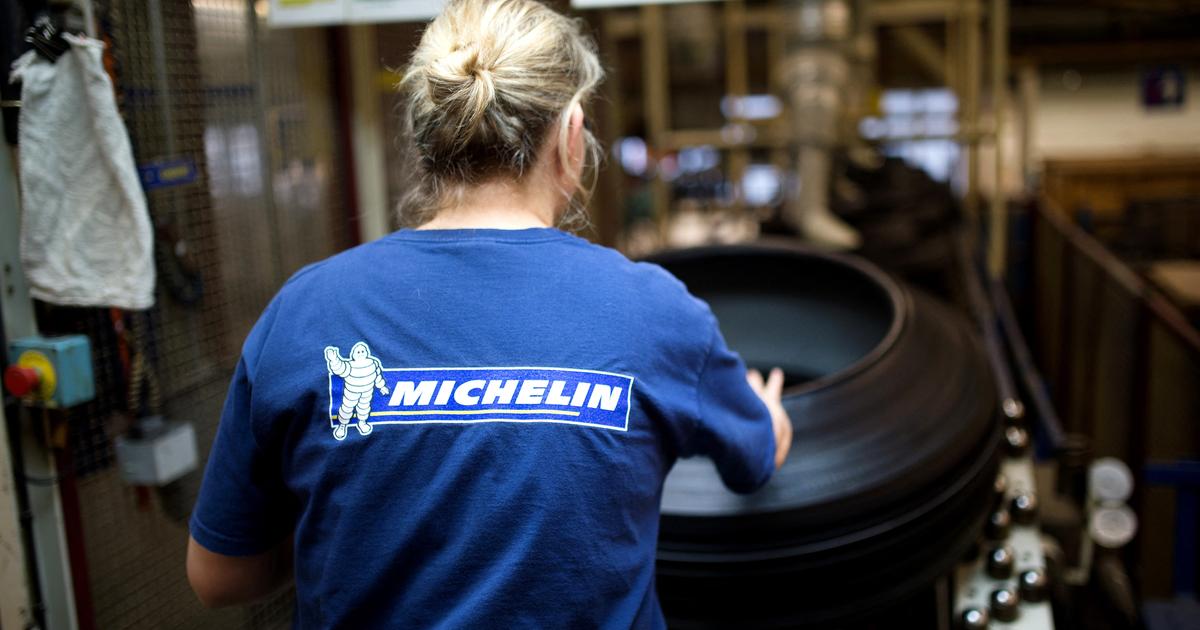Focus on climate crisis
All articles | More information
Reporting on climate change is one of the major journalistic challenges of our time. The climate crisis is also one of the most important issues of humanity for SPIEGEL. For this reason, we support an international initiative that seeks to take a look this week: "Covering Climate Now" has been initiated by the Columbia Journalism Review and the Canadian newspaper "The Nation", with more than 200 media companies worldwide including the Guardian, El País, La Repubblica, The Times of India, Bloomberg or Vanity Fair. SPIEGEL is dedicating the cover story of the current issue to the climate crisis this week and every day pays special attention to mirror.de
In the Grand Coalition, a compromise in climate policy is emerging: The Union and SPD want to spend a high two-digit billions - speculation is over 40 billion euros - for more climate protection.
More important than this mere sum, however, is the systemic question: What method does the Federal Government intend to use in future in order to structurally reduce CO2 emissions?
Two mechanisms have so far been discussed: emissions trading , where the industry would have to buy pollution rights for CO2 emissions - and a CO2 tax . The tax had long been decidedly favored by the SPD. However, there are increasing signs that the Union and the SPD are now agreeing on an expansion of emissions trading.
What is it all about?
Germany is missing out on its climate protection targets: By 2020, CO2 emissions should actually fall by 40 percent compared with 1990, and probably just over 30 percent. The public debate - Greta, hot summers, forest dying - has also increased the pressure, this time to actually respond to the breaking of their own specifications.
The tension in politics is outlined in two sentences by William Nordhaus, winner of the 2018 Nobel Prize for Economics: "People use too much dirty energy because they do not have to pay the actual costs they incur." , is the first Nordhaus sentence. To praise energy is only unfortunately "not so attractive for voters," is the second. In short: consumption of fossil energy should be more expensive, but without chasing citizens on the barricades or in the arms of populists.
In recent years, climate policy has mostly been a subsidy policy. Politicians hoped to use subsidy billion to promote innovative technologies and the expansion of renewable energies. Meanwhile, parts of the ruling parties have arrived: that's not enough. All previous appeals to business and consumers have brought little. The task is thus: How can the policy bindingly restructure the conditions so that industry and private individuals massively direct their behavior towards climate protection? And without excessive bureaucracy?
A large majority of experts say: best about the price. However, there are different models to increase the cost of CO2 emissions. The most prominent are the emissions trading and the CO2 tax.
The Emissions Trading: Exchange for Pollution Rights
Those who cause CO2 damage the general public by passing on long-term damage to the community. The idea of emissions trading is to burden some of this long-term damage as direct costs to the polluter. In concrete terms, factories and power plants must first buy licenses if they want to release CO2, and that per ton.
These pollution certificates are in turn tradable: who has more CO2 certificates than he needs - for example, because he uses new technologies - can sell them and make money. Emissions trading has a clear advantage: the amount of CO2 emitted can be precisely controlled by the number of certificates set by the government.
Does it work?
In the EU, an emissions trading system has been in operation since 2005, the primary goal of which is to reduce CO2 emissions. It involves all 28 EU Member States plus Norway, Iceland and Liechtenstein. It covers 11,500 factories and power plants so far. The emission reduction is to be achieved by first setting an upper limit for the amount of greenhouse gas emitted per year.
Emission allowances are issued up to this limit. They must then have such a certificate per tonne of CO2 emitted by installations. The companies can acquire these papers among others at auctions or in trade with other industrial operators. Recently, a price of about 26 euros per tonne of CO2 had developed on the stock market.
Proposals by the EU now foresee that Germany will establish its own national emissions trading system, in parallel with EU emissions trading. German emissions trading is intended to cover areas that have not yet been covered at EU level, especially transport and the building sector. It would be possible that both systems would then be merged in a few years.
What is the catch?
Emissions trading is associated with bureaucracy. First of all, it has to be determined which plants and factories actually emitted how much CO2. Then there must be an apparatus that oversees the trading and ownership of the certificates. In the case of the EU system, this is around 300 people.
Even then, it is not clear that a price will be set on the stock market that really benefits the climate. For example, Ottmar Edenhofer from the Potsdam Institute for Climate Impact Research has pleaded for a tonnage price in emissions trading of initially 35 to 70 euros, which should then rise to 130 euros by 2030. Of these, the CO2 price in European emissions trading is far away. From 2012 to 2018 he even balked at the five euros. A ton of CO2 cost less than a pizza.
Responsible for this is politics - and their fear of hurting potential voters and supporters in the economy. When the European emissions trading system was finally introduced in 2005, the policy at the start was so high on the amount of available emission allowances that the price of the individual certificates on the stock market fell promptly to 0 euros: there were many more pollution rights than actually needed were. Of course, this also eliminates any steering effect: Why should power plants and factories use CO2 emissions more sparingly if they were thrown out of their licenses?
The CO2 tax: one for everything
She is the darling of most economists: the carbon tax , as she called her creator, the US economist Nordhaus. The idea behind it is simple: if the consumption of fossil fuels gets more expensive, then consumers have a financial incentive to change their behavior. Bus driving is worthwhile in the tendency more than driving a car - because the fuel costs rise. Redeveloping buildings is becoming more attractive - because the savings made on energy that has become more expensive are even more significant. On the other hand, alternative propulsion technologies and renewable energies are also becoming more competitive - because they are not subject to any CO2 tax.
Unlike the emissions trading, the CO2 tax is also relatively unbureaucratically feasible. This is due to the fact that sales and consumption of fossil fuels are already largely covered, because they are already burdened with separate taxes, such as gasoline with the mineral oil tax. A uniform CO2 tax could thus also replace the patchwork of German energy taxes.
The biggest advantage from the perspective of many economists: CO2 would be taxed at a uniform price across all sectors of the economy. This would provide an incentive to use fossil fuels only where they bring the greatest benefit - and not where the tax burden is the least.
Does it work?
Several states have already introduced CO2 taxation systems, such as Switzerland in its direct neighborhood. The tax rate was initially 12 Swiss francs per tonne in 2008, since then it has been increased in four steps to last 96 francs, the equivalent of about 88 euros. Investigations conclude that the tax referred to in Switzerland "steering tax" has developed "noticeable effect in household and business".
What is the catch?
Strictly speaking, the problem lies less in the construct itself than in its designation as a tax . The CO2 tax is almost automatically equated in the political debate with a greater burden on citizens. The Union has also justified why it prefers emissions trading. After all, a CO2 tax is nothing but "tax increases on gasoline, diesel, heating oil and gas".
However, the CDU and the CSU regularly ignore this: Most expert concepts for a CO2 tax want to prevent exactly that. The revenue will be repaid at the end of the year, in the form of an "eco-dividend" or a "climate bonus" - regardless of the actual energy consumption. The aim of the CO2 tax is finally a change in consumer behavior, not higher government revenues. This also distinguishes them from the eco-tax.
For example, if you as a consumer book long-haul flights in a year and have to pay 800 euros more in CO2 tax, at the end of the year you would only receive the average sum per citizen of 120 euros as repayment. Those who refrain from long-haul flights would still receive 120 euros.
In fact, such repayment systems are more than a cloudy idea of economics professors. They already exist. In Switzerland, two-thirds of the revenue is paid to the population, and one-third flows into energy-saving programs.
What exactly is the Federal Government planning?
Still struggling for the details. A carbon tax is blocked by the Union vehemently and is apparently as good as off the table. Because an emissions trading system, however, could not start until 2022 or 2023 because of the enormous bureaucratic effort, is currently a mixed model in the conversation: The first few years could be levied a CO2 tax - which could then be replaced by a national certificate trading.
Whether this trade will even have a great impact at all is questionable in view of the statements made by the participants. The Union has already announced that it will not hurt anyone - and wants to have not only set a lower limit for the emission allowances, but also a maximum price. How she wants to achieve Germany's climate target 2050 (at least 80 percent CO2 reduction) remains her secret.
The CSU is beating even more public pegs. "What can not be done at all is based purely on an increase in the price of energy," says head of the CSU parliamentary group Thomas Kreuzer.
Maybe he did not notice, but: That's exactly the idea.











